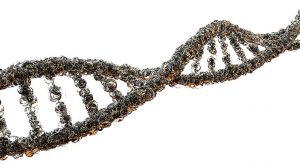Definition
noun
(genetics) The manifestation of a recessive trait, mimicking an inheritance of a dominant pattern
Supplement
In genetics, the property of a gene or an allele to be expressed over the other gene in a pair is referred to as dominance. When a gene (allele) is expressed it is described as dominant. A gene that is not expressed is said to be recessive. The absence of a dominant gene leads to the expression of the recessive gene. This can be observed particularly in homozygous alleles. It implies that both paternal and maternal alleles inherited by the offspring are recessive. There are instances though when the pattern of phenotypes does not correspond to this inheritance pattern. There are situations wherein only one recessive allele is inherited and yet is expressed. This is called pseudodominance. The recessive trait is manifested as if it follows the pattern of inheritance of a dominant allele. Many of X-linked genetic disorders in males are pseudodominant. Since males receive one X chromosome and one Y chromosome, the recessive gene in the X chromosome leads to its expression. Haemophilia in males is an example of pseudodominance. The gene responsible for the manifestation of haemophilia in males is recessive and X-linked.
Variant(s):
- pseudo-dominance
Synonym(s):
See also:
Related form(s):







